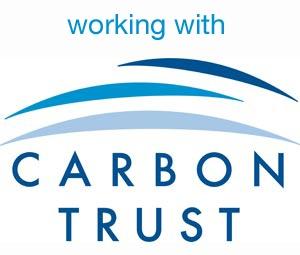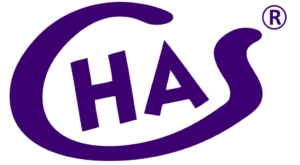As a homeowner in London, you may be familiar with the importance of energy efficiency, but have you considered the role water efficiency plays in your home’s sustainability? With increasing concerns about water scarcity and rising utility costs, understanding and implementing water calculations is becoming essential for homeowners in the capital. This guide will walk you through the basics of water calculations, why they matter, and how you can use them to make your London home more sustainable and cost-efficient.
What Are Water Calculations?
Water calculations are a method used to estimate the amount of water a household will use, typically expressed in litres per person per day. These calculations consider various factors, including the efficiency of water fixtures and appliances, such as taps, showers, toilets, and washing machines. The goal is to determine the overall water consumption of a property and identify opportunities to reduce water use.
For homeowners in London, water calculations are not only a tool for understanding your water usage but also a requirement for new builds and major renovations to meet building regulations. They are crucial for ensuring that your home is as water efficient as possible, which can lead to significant environmental and financial benefits.
Why Are Water Calculations Important for London Homeowners?
1. Compliance with Building Regulations
In the UK, Part G of the Building Regulations mandates specific water efficiency standards for new homes and significant renovations. For London properties, this often means limiting water consumption to no more than 105 litres per person per day, which is stricter than the national standard of 125 litres. Meeting these regulations is essential for obtaining planning permission and ensuring that your home complies with legal requirements.
Water calculations are the primary method for demonstrating that your home meets these standards. Without accurate water calculations, you could face delays or issues with your building project.
2. Reducing Water Bills
London is one of the most expensive cities in the UK, and utility bills are a significant part of household expenses. By implementing water-efficient fixtures and appliances based on water calculations, you can reduce your water consumption and, consequently, your water bills. Even small changes, such as installing low-flow showerheads or dual-flush toilets, can lead to substantial savings over time.
For homeowners looking to reduce their living costs, water calculations offer a clear pathway to achieving lower utility bills through smarter water use.
3. Environmental Responsibility
London faces increasing pressure on its water resources due to population growth and climate change. Water conservation is a critical aspect of the city’s sustainability efforts, and homeowners have a role to play. By using water calculations to guide the design and operation of your home, you can significantly reduce your water footprint.
Implementing the recommendations from water calculations not only helps conserve water but also reduces the energy used in heating water, contributing to a lower carbon footprint. For environmentally conscious homeowners, this is a crucial step in making a positive impact.
4. Enhancing Property Value
As sustainability becomes a more significant concern for buyers and renters, homes with strong water efficiency credentials are increasingly attractive in the property market. A home that meets or exceeds water efficiency standards is likely to have a higher market value and appeal to a broader audience.
In a competitive market like London, where property buyers are often seeking long-term value, having a water-efficient home can set your property apart. It not only adds to the property’s green credentials but also offers a selling point in terms of lower running costs.
5. Future-Proofing Your Home
With ongoing concerns about water scarcity and potential future regulations on water use, ensuring your home is water-efficient is a smart move for long-term security. Water calculations help identify areas where water use can be minimised, making your home more resilient to future changes in water availability or regulations.
By investing in water-efficient technologies and practices now, you can safeguard your home against future challenges, ensuring it remains compliant and efficient for years to come.
How to Conduct Water Calculations for Your London Home
Conducting water calculations involves assessing the water usage of various fixtures and appliances in your home. Here’s a step-by-step guide to getting started:
- Assess Your Fixtures and Appliances: Begin by taking inventory of all water-using fixtures and appliances in your home, including taps, showers, toilets, dishwashers, and washing machines. Note their flow rates and capacities.
- Calculate Water Usage: Use the flow rates and usage patterns to calculate the total water consumption. This can be done manually or with the help of online calculators and tools designed for water efficiency assessments.
- Compare Against Standards: Compare your calculated water usage with the target set by building regulations (105 litres per person per day for London). Identify areas where your usage exceeds the target and explore options for improvement.
- Implement Water-Saving Measures: Based on your calculations, consider installing water-efficient fixtures such as low-flow taps and showerheads, dual-flush toilets, and energy-efficient appliances. Additionally, consider water recycling systems like rainwater harvesting or greywater reuse for non-potable purposes.
- Monitor and Adjust: Once improvements are made, continue to monitor your water usage to ensure that it remains within the target. Regularly check for leaks and consider upgrading old fixtures to more efficient models as needed.
Additional Tips for Water Efficiency
- Install Smart Meters: Smart water meters allow you to track real-time water usage, helping you identify patterns and areas where water can be saved.
- Fix Leaks Promptly: A dripping tap can waste thousands of litres of water over time. Regular maintenance to fix leaks can prevent unnecessary water loss.
- Educate Household Members: Encourage everyone in your household to adopt water-saving habits, such as shorter showers and turning off the tap while brushing teeth.
Conclusion
Water calculations are an essential tool for London homeowners looking to enhance the sustainability and efficiency of their homes. By understanding your water usage and implementing water-saving measures, you can reduce your utility bills, contribute to environmental conservation, and even increase the value of your property.
In a city where water resources are under pressure, taking proactive steps to manage your water consumption is not just a regulatory requirement—it’s a smart, responsible choice. Whether you’re planning a renovation, building a new home, or simply looking to improve your existing property, incorporating water calculations into your planning process is a key step toward a more sustainable and cost-efficient future.
If you’re unsure where to start, consider consulting with a professional who can guide you through the water calculation process and help you implement the best solutions for your home.












